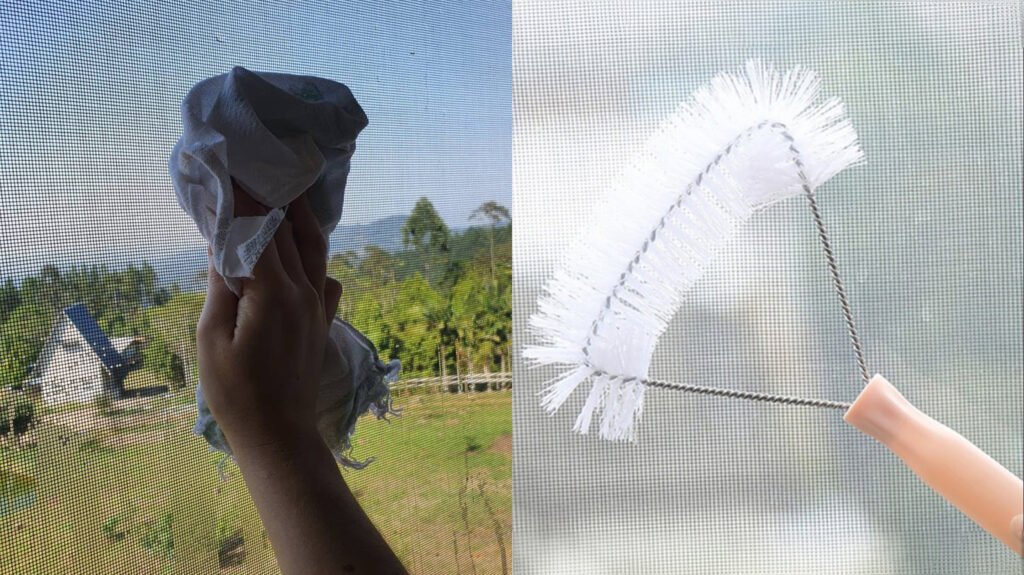A well-kept insect screen is a thing of beauty and a shield to protect your family’s health from dreadful blood-borne diseases.

PHIFER Mosquito Screens are a smart investment for any homeowner looking to protect their home from mosquitoes and other insects. With their combination of quality, functionality, and style.
Once you install Phifer mosquito screens, our experts will walk you through the steps to clean and maintain mosquito screens.
Why clean mosquito nets regularly?
Mosquito screens are installed on doors, windows, balconies, farms, and greenhouses. They are prone to dust, dirt, allergens, and other impurities.
If you clean mosquito net screens regularly, they look fresh, last longer, and protect your home against insects and allergens. They also let in fresh airflow.
In this blog post, we walk you through the steps to clean your Insect screen correctly.
Tip: If the mosquito net screen is made of cotton or other material, wash it with your hands.
Before you start with the maintenance, please remember the don’ts of cleaning an insect screen.
Don’ts of cleaning insect screen
Do not apply too much pressure or force on the mesh. It will damage the mesh.
Harsh soaps damage the mosquito screen material. Always, test a small area of the mesh before you wash the entire screen. Strong chemicals wear out the threads and discolour the material.
Don’ts of drying mosquito screens
Do not use the dryer to dry insect nets.
What do you need to clean mosquito screens?
Materials needed to clean Insect Screens
- Vacuum cleaner
- A soft sponge or cleaning rag
- Brush
- Mild soap
- Clean Water
- Bucket and cup
- Garden hose or shower head
- Spray bottle
Step 1: Dusting with a Soft Brush or Vacuum
Using a brush – Gently remove the dust, pollen, and debris from the mesh using a soft-bristle brush, including the corners and creases.
Using a vacuum: You can also use a brush attachment to dust the mesh effectively.
Tip: Always use a wet vacuum cleaner for all cleaning purposes.
Step 2: Cleanse the Insect Screen with Soap
Fill a bucket with lukewarm water and prepare a mild soap solution. Dampen a sponge or soft cleaning rag in the solution. Now, gently wipe the mosquito screen on the front and back sides.
Step 3: Rinsing the Mosquito Screen
Once you have cleaned the insect screen with soap and water, rinse it with clean water. Use a garden hose or a shower to remove the detergent and stubborn debris.
Step 4: Dry the Insect Screen
Now, dry the insect screen with a dry cloth. Make sure you dry it in sunlight before you assemble it again.
Step 5: Mount the Insect Screen
Once the mosquito screen is dry, mount it back in place. Make sure it is well seated and works appropriately.
There you go! Your home is back to its aesthetic grace.
If you clean the mosquito screens more often, you don’t have to dismantle them whenever you dust them. Cleaning the insect screens is a daily routine that keeps them beautiful and functional.
How Often Should I Clean Insect Screens?
If you live in a warm location with less wind, you can clean your mosquito screens once a month.
How do you get dirt out of a mosquito net?
Place the net under the fast running water to clean the dust out of a mosquito net. Then, rub it with sponge and soapy water.
Can you wash nets in a washing machine?
You cannot wash Phifer Mosquito Screens in a washing machine.
Which products are best for a high humidity climate?
All fiberglass screens, sun control screens, TuffScreen® and PetScreen®.
Which products have the best outward view?
Phifer UltraVue2 and Phifer SeeVue provide the maximum clarity/best viewing experience. Phifer BetterVue offers a better view than standard fiberglass or aluminum screen.
Which products block solar heat and glare?
Phifer SunTex® 80 and Phifer SunTex 90, Phifer Solar Insect Screen, and Phifer SunScreen.
